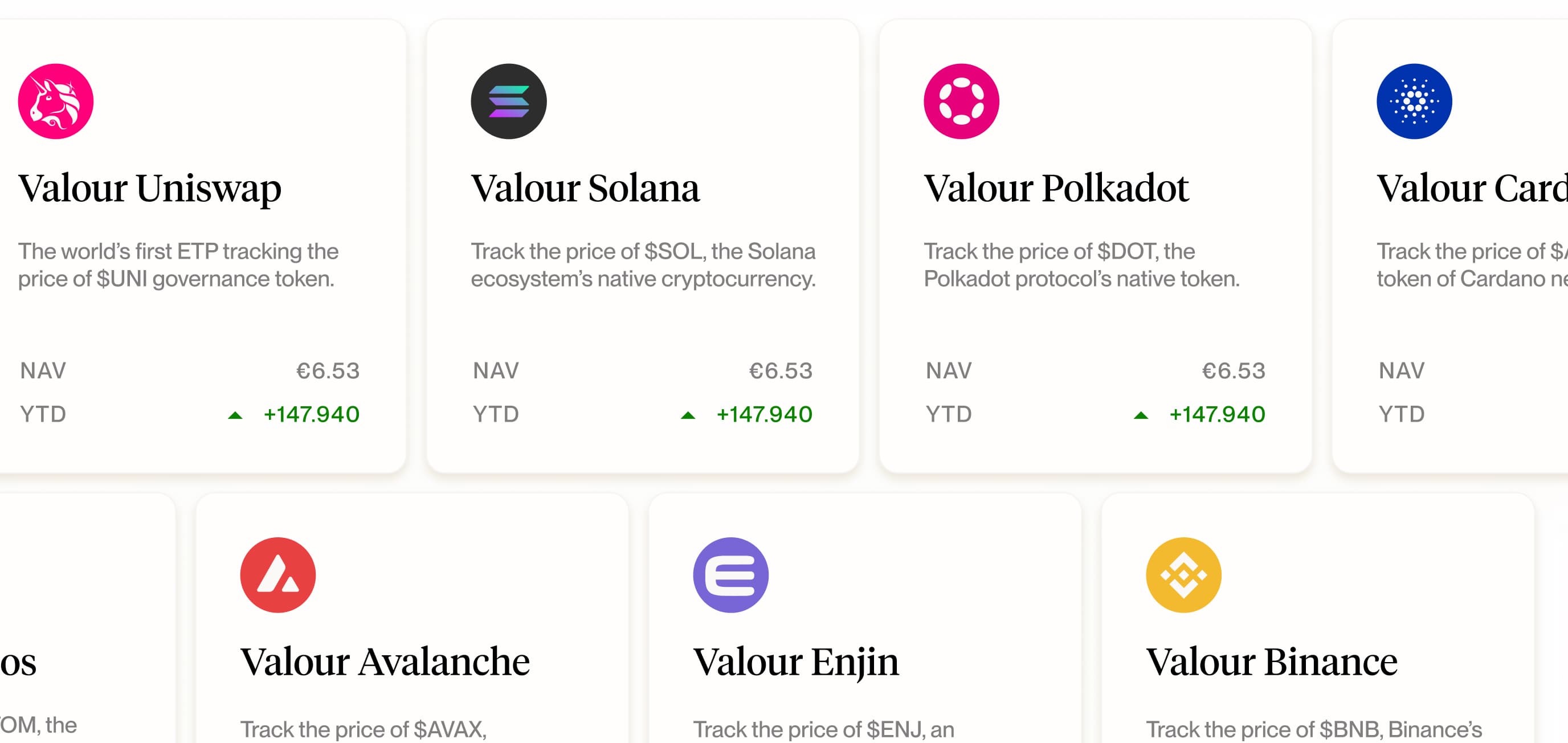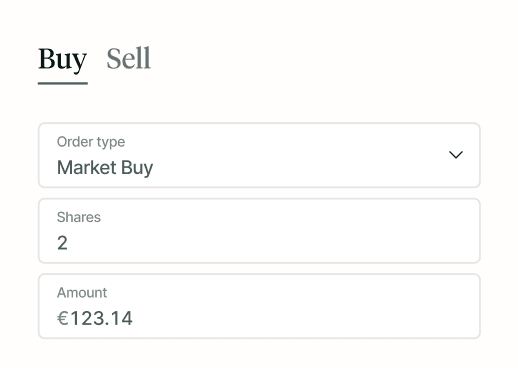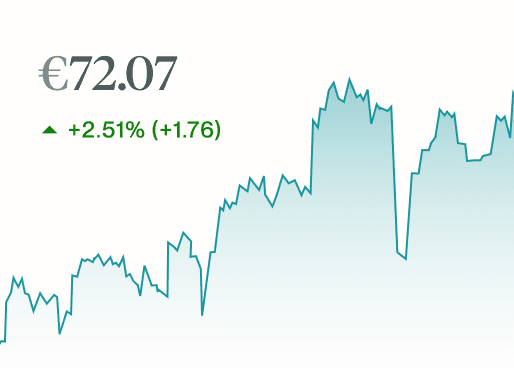1Valour Internet Computer (ICP) Physical Staking is an exchange-traded product that tracks the price of ICP, the native token used to power the Internet Computer’s ecosystem. The Internet Computer is a blockchain project that aims to create a decentralized and scalable internet infrastructure by allowing smart contracts to run directly on its network, eliminating the need for traditional server-based architectures. It seeks to enable a new paradigm of web development, where applications are hosted natively on the blockchain, providing greater security, efficiency, and accessibility.
Valour’s Physical product line offers compliant Exchange Traded Products under EU regulations, with each product 100% physically backed and securely held in cold storage by licensed custodians. Traded on regulated exchanges, these ETPs provide transparent pricing and liquidity, ensuring investor confidence. Valour’s Base Prospectuses are approved by the Swedish Financial Supervisory Authority, meeting EU requirements for completeness, clarity, and consistency.
- Product Name1Valour Internet Computer Physical Staking
- IssuerValour Digital Securities Limited
- Base CurrencyEUR
- Management Fee1.9%
- ISINGB00BS2BDN04
- ValorenN/A
- WKNA3G9SD
- Expiry DateOpen-ended
Staking on the ICP network involves participating in the governance of the platform. Users can propose protocol-level changes, which, once approved by ICP token holders, are seamlessly deployed by the Network Nervous System (NNS). ICP token holders who stake their tokens in neurons for a specific lock-up period are eligible for voting and voting rewards. Neurons can vote manually or follow other neurons in something referred to as a liquid democracy. The longer a neuron is locked, the more voting rewards it accumulates. These rewards, distributed as maturity, are unrealized ICP and can be staked or spawned. Staking maturity enhances the neuron's voting power, while spawning converts the maturity into a liquid form, allowing ICP usage outside the NNS after a week. Please visit Internet Computer for more detailed information on staking within the ICP network.
In Proof-of-Stake blockchains, validators stake (lock up) tokens as collateral to verify and add new blocks to the chain. Validators are typically selected to propagate new blocks based on the proportion of their stake relative to the total stake on the network. Validators earn rewards when their proposed blocks reach consensus by being verified by other validators on the network, ensuring that each new block added to the chain contains valid transactions, thereby guaranteeing the security of the network.
Valour’s staking ETPs remain 100% physically backed at all times, never leaving Valour’s licensed institutional custodian’s cold storage.
For each ETP launch, Valour partners with one of its select institutional custodians Copper Markets (Switzerland) AG and Komainu (Jersey) Limited. Copper Markets (Switzerland) AG is registered with The Financial Services Standards Association (VQF), an SRO recognised by the Federal Financial Market Supervisory Authority (FINMA), and Komainu (Jersey) Limited is regulated by the Jersey Financial Services Commission. Valour regularly evaluates its operational processes and assesses the suitability of new custody partners to ensure optimal security on behalf of its investors.
Valour has carefully selected its staking partners in order to mitigate the risks associated with individual staking on behalf of its investors. In addition to the direct staking services afforded by Valour’s named staked ETP custodians, Valour has selected Figment; a world leading provider of institutional blockchain infrastructure including comprehensive staking solutions, and, Blockdaemon; an industry leading provider of secure institutional blockchain infrastructure for web3 as well as the Web3 Ledger Enterprise platform as chosen partners for Valour’s staked ETPs. These providers work seamlessly with Valour’s named custodians to facilitate non-custodial, 100% fully collateralised staking at all times.
Valour stakes the assets of eligible staking ETPs with its designated non-custodial staking partners. This means that the underlying assets remain 100% physically backed all of the time whilst accruing staking rewards. These rewards are reflected in the ETPs daily updated Net Asset Value (NAV), with no action required on the investor’s part.
Staking is a feature of Proof-of-Stake blockchains and is currently available across a number of Valour products whereby support for staking is facilitated by Valour’s licensed custodians and staking providers. As the ecosystem for digital assets continues to grow, Valour regularly looks to expand its product range, offering the most innovative and secure ETPs to its investors.
Valour Staking ETPs are subject to a fixed product specific management fee that is incorporated into the Net Asset Value (NAV) of each product on a daily basis. As explained below, staking rewards generated by networks are dynamic/variable adjusting from day to day/epoch to epoch. Given the additional costs associated with Valour’s staking ETPs, rewards are shared between investors and Valour, whereby Valour will pass through a fixed percentage of staking rewards to investors.
Network staking rewards can be influenced by a variety of factors, including for some protocols, the minimum commitment required for network participation e.g. for Ethereum, a minimum stake of 32 ETH is required to become a validator. This requirement can lead to situations where investor funds are not immediately deployed for staking until enough aggregate assets can be committed to a validator to meet the minimum hurdle of 32 ETH. In addition to the minimum required stake, rewards can vary based on the number of participating validators at any given time, as well as total network transaction volume. Staking rewards are typically higher when fewer validators are participating in the network in order to incentivise more stakers to join and secure the network. Given that network usage changes constantly, staking rewards vary accordingly. Valour’s innovative staking products tackle this variability by incorporating a fixed staking reward component that is passed through to investors via daily attribution to Valour staking ETPs’ daily Net Asset Value (NAV).
Valour frequently assesses its range of innovative and secure exchange traded products to ensure it provides its investors with the best tools to gain a simple and trusted exposure to the future of finance and Web3. As per the company’s roadmap, Valour looks to continuously expand its product line, allowing investors to diversify their portfolios through staking crypto asset products, as well as combined digital asset exposures with other asset classes such as equities and commodities.
As is the case with all of Valour’s ETPs, Valour’s staking products provide daily liquidity and can be bought or sold daily. In order to ensure the ability to meet its daily redemptions, Valour applies a utilisation rate to each staking product whereby less than 100% of the underlying crypto asset is staked to accommodate for each network’s specific bonding and unbonding periods, as well as the length of each epoch. The longer the network’s specific bonding and unbonding periods and/or epoch length, the lower the utilisation rate Valour is able to deploy to ensure sufficient assets remain ‘unlocked’ to facilitate daily liquidity. Thus, when utilisation rates are low, investors receive lower staking rewards seeing as a smaller % of assets are earning a staking reward on the network.
Valour’s staking ETPs are accumulating products whereby a fixed staking reward is added to each qualifying product’s Digital Asset entitlement and reflected in the Net Asset Value (NAV) at the end of each trading day.
Valour is committed to continually monitoring the staking environment for its eligible underlying assets. This assessment encompasses factors including network congestion, liquidity management, and the backing from market makers, custodians, and its staking providers. Valour’s primary aim is to optimise staking rewards for investors whilst simultaneously ensuring daily liquidity and covering costs. Valour may share in the staking rewards with investors. Any potential adjustment to the fixed coupon provided by Valour will be transparently communicated via LSEG RNS notification system through to the ETPs listed exchange. From here the exchange will manage onward communication to end investors.
When staking crypto assets, there are several risks and limitations that should be considered:
Lockup Periods - Bonding and unbonding are two related concepts that refer to the process of staking and unstaking tokens in a blockchain network. Whilst bonding involves locking up tokens as collateral for network validation, unbonding refers to the process of withdrawing staked tokens to be made available for transfer or use elsewhere. Typically, unbonding involves a waiting period in which the tokens cannot be accessed or transferred with the length of lockup varying according to each blockchain network’s rules, ranging from a number of days to months.
Valour’s Utilisation Rate Limits - Seeing as most blockchain networks incorporate an unbonding period before staked assets can be withdrawn for transfer, Valour deploys an innovative algorithm to ensure it can meet the liquidity requirements of its staked ETPs whilst taking the various lock-up periods into consideration. As such, Valour has determined an optimal utilisation rate for each blockchain network in which a portion of assets are left unstaked to accommodate for daily investor redemptions, accounting for the blockchain network’s specific bonding and unbonding period(s), as well as the length of each network’s epoch(s). The longer the network’s specific bonding and unbonding periods and/or epoch length the lower the utilisation rate to ensure sufficient assets remain ‘unlocked’ to facilitate daily liquidity. The lower the utilisation rate the lower the staking rewards received by investors as a smaller % of assets are earning a staking rewards on the network.
Slashing - Slashing is a penalty mechanism incorporated by blockchain networks to discourage malicious and negligent behaviour. Given that validators are responsible for maintaining the network’s operations, slashing ensures that participants act within the network’s best interests by removing some of the validator’s stake when the validator goes offline for prolonged periods, engages in double-spend attacks, or attempts to run modified software on the network. The amount slashed varies by network, depending on the severity of the violation. Valour mitigates the slashing risk for its investors via its careful selection of staking partners and their slashing insurance policy coverage (where applicable).Staking Platform (Validator) Risk - The staking platform used when delegating assets poses its own platform risk arising from the possibility of technical issues and/or security breaches that could compromise the integrity of the staking platform or validator. Considering that malicious and negligent validators are penalised for prolonged downtime and various other network violations, the choice of staking platform could result in the loss of rewards for the investor. Valour seeks to minimise the platform risk through its diligent selection of staking providers, ensuring overall operational professionalism and regulatory compliance.
Disclaimer: As with any financial strategy, investors should be aware of the risks and limitations involved. The information contained above is not exhaustive and should not be relied upon as the sole basis for making investment decisions. Investors should consult the base prospectus for complete information on the investment product, including its terms, conditions, and risks involved.
Valour has partnered with leading regulated custodians and staking service providers in the structuring of our staked products. Valour’s Internet Computer Physical Staking ETP is custodied by with staking services provided by VQF registered Copper Markets (Switzerland) AG. In selecting its partners, Valour has prioritised ensuring optimal security of the product’s underlying, ensuring seamless, non-custodial, 100% fully collateralised staking at all times.

Crypto staking enables users to participate in the governance and consensus of a Proof-of-Stake (PoS) blockchain, earning rewards for their contribution. While Proof-of-Work blockchains utilise energy expending miners to validate and generate new blocks, PoS networks elect validators who stake (lock up) collateral to validate and add new blocks to the chain. Validators earn rewards when their proposed block reaches consensus by being verified by other validators on the network. Should the network deem the new block invalid, the selected validator is penalised in the form of having some of their staked holdings slashed. This process ensures that every new block added to the chain contains transactions that are verifiable, thereby guaranteeing the status and security of the network.
In the ICP network, assets committed to staking are eligible for rewards by actively participating in on-chain governance through the voting process. Those who lock ICP in neurons and engage in manual voting or follow other voting neurons receive a daily distribution of rewards. The distributed rewards consist of unrealized ICP, which can be staked or spawned. The accumulated staking rewards contribute to the neuron's voting power, while spawning converts the maturity into ICP tokens, allowing the ICP within the neuron to be used beyond the Network Nervous System (NNS).
Staking on-chain can be a complex process. Typically, validators must lock up their staked holdings for a certain period of time known as the bonding period. Bonding periods vary based on the network and often do not permit for validators to unstake their holdings until completion. Additionally, many networks subject staked funds to an unbonding period before which validators can withdraw their rewards, making it difficult to access funds quickly if needed.
Earn more while spending less with our competitive management fees.
Access the future of finance with the security of regulated listings and licensed offerings.
Trade Bitcoin and other digital assets without a dedicated crypto trading account.
Clear, consistent link between price of the ETPs and the underlying asset











